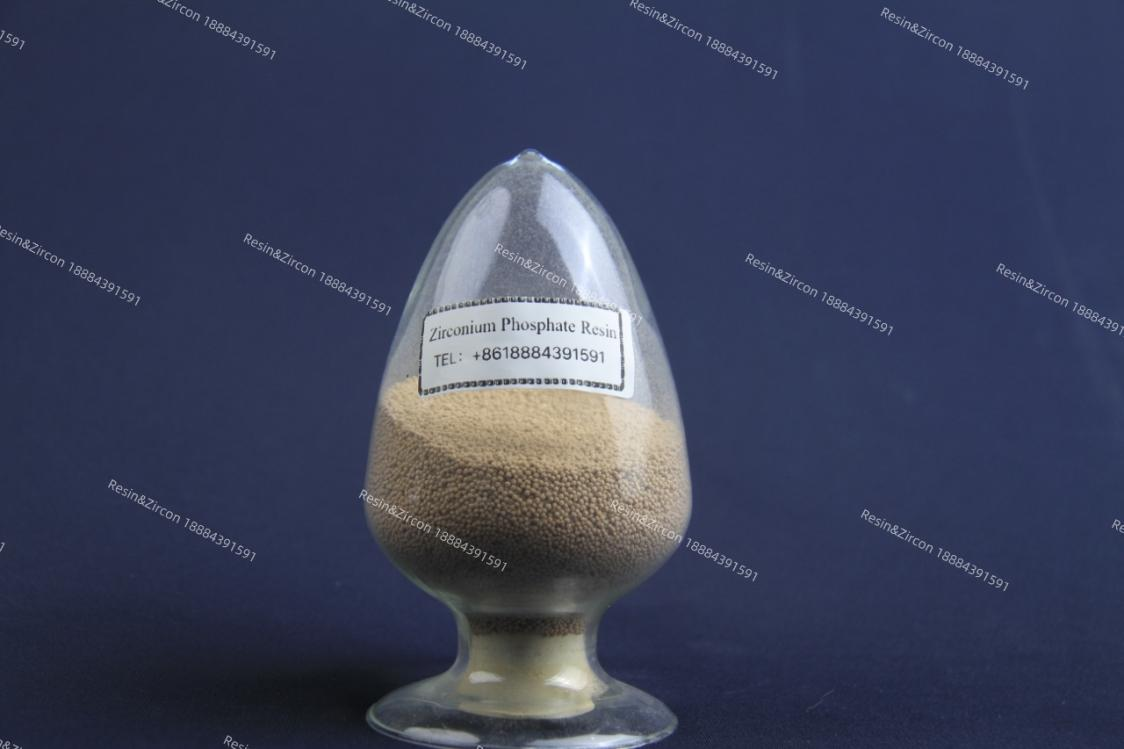Resins of Zirconium Phosphate

Application area
1. Nuclear wastewater treatment (core application areas)
- Low-level radioactive wastewater treatment: In the low-level radioactive wastewater (with low radioactivity) generated during daily operation of nuclear power plants, ¹³⁷Cs (cesium) and ⁹⁰Sr (strontium) are the main pollutants. Especially in high-salt environments, it can effectively distinguish radioactive ions from conventional sodium ions and calcium ions, thereby reducing the radioactivity in the wastewater below discharge standards.
- Treatment of medium and high level radioactive wastewater: Medium and high level radioactive wastewater (such as waste fuel reprocessing wastewater) has strong radioactivity, complex composition, and is often accompanied by high temperature and strong radiation environment. Organic resin is prone to radiation degradation in this environment.
- Special scenario wastewater treatment: such as nuclear accident emergency treatment (such as Chernobyl and Fukushima nuclear accidents), it is necessary to quickly treat the leaked radioactive wastewater. The concentration of radioactive ions in the water can be rapidly reduced by on-site deployment of adsorption column or fluid bed to control the spread of pollution.
2. Spent fuel reprocessing
- Spent fuel (used nuclear fuel) contains unrecovered uranium, plutonium and other recoverable nuclides, as well as a large number of fission products (such as cesium, strontium, rare earth elements, etc.), which need to be reprocessed to realize nuclear fuel recycling and separation of dangerous fission products.
- Fission product removal: One of the core steps of spent fuel reprocessing is the separation of uranium, plutonium and fission products. ZrP resin has high selectivity for cesium, strontium and other fission products, which can accurately capture these radioactive ions from complex solutions through ion exchange, so as to avoid interference with the recovery of uranium and plutonium.
- Actinides separation: For uranium, plutonium, neptunium and other actinides, ZrP resin can be used to separate different actinides step by step by adjusting the solution PH or introducing competitive ions, so as to improve the purity of nuclear fuel recovery.
1. Radioactive waste pretreatment and volume reduction
- The final disposal of radioactive waste (such as waste resin, sludge, concentrate, etc.) requires pretreatment to reduce volume and reduce hazards. ZrP resin is used for radioactive ion concentration in this process.
- Radioactive ion concentrations in low-level radioactive wastewater are typically low (e.g., Class μg/L). Direct solidification methods like cement or glass vitrification result in massive waste volumes. ZrP resins utilize ion exchange technology to concentrate radioactive ions into the resin phase (achieving concentrations of 10^-7 g/L), dramatically reducing the volume required for subsequent solidification processes by 10-100 times. This approach significantly lowers disposal costs while maintaining environmental compliance.
4. Nuclear power plant circulating water treatment
- The cooling system of nuclear power plant (such as the secondary side circulating water) needs to strictly control the ionic composition of water to avoid the scaling or corrosion of pipes caused by impurity ions (such as calcium ions and magnesium ions), and prevent the accumulation of radioactive ions (such as ¹³⁷Cs leaked from the damaged fuel cladding) in the system.
- ZrP resin can specifically remove the scaling ions (such as Ca²⁺, Mg²⁺) and trace radioactive ions in the circulating water, ensure the efficient and stable operation of the cooling system, and reduce the risk of migration and diffusion of radioactive substances.
5. Separation and purification of radioactive substances (medical and industrial)
- In the production of radioactive isotopes (such as medical ¹³¹I, ⁸⁹Sr) or the preparation of industrial radioactive tracers, it is necessary to separate the target isotopes with high purity (to remove impurities and other radionuclides).

Follow WeChat


